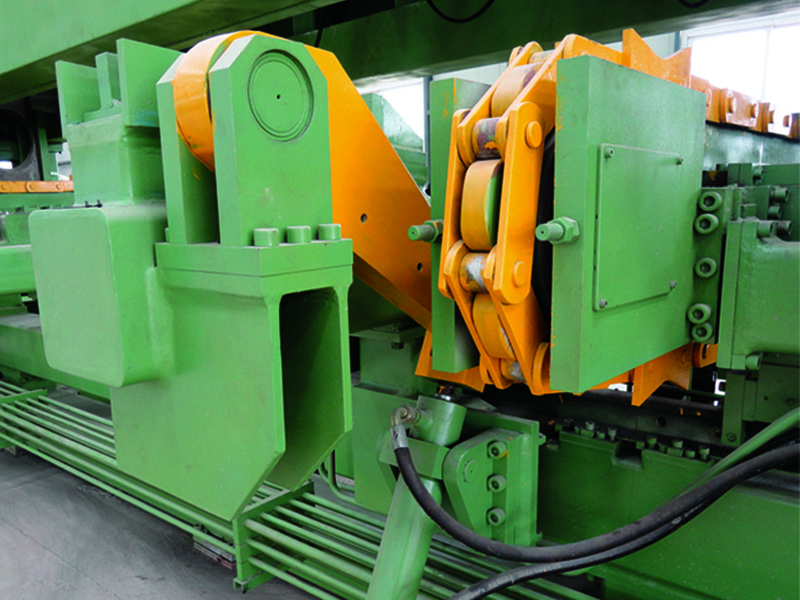Total station search
Hydraulic pressSteel tube hydrostatic testing machineSteel pipe hydraulic press
Seamless Pipe pressure testing machine use a conventional sealing method produced very low power, consumption alarming seals, high cost. The large gap sealing technology is applied to the seamless steel pipehydraulic pressure test machine , which eliminates the damage to the seal, steel pipe and wire buckle during the transportation of the steel pipe in and out of the hydraulic pressure test equipment.
Steel pipes that receive pressure, such as boiler pipes, oil pipes, and casings, must be subjected to hydraulic pressure tests. Hydraulic pressure test machines are an indispensable device for producing pressure-bearing steel pipes. The hydraulic pressure testing machine detects the ability of the pipe wall to accept pressure by filling the steel pipe with water, pressurizing, and holding pressure. Judging from the hydraulic pressure testing machines currently used in domestic watches, the central skill problem of high pressure hydraulic pressure testing machines is to test the pressure of the sealing head.
The sealing skills often used in hydraulic pressure testing machines can be divided into radial seals and end face seals. End face seals are only suitable for low water pressure experiments (within 10MPA), and seamless steel pipe hydraulic pressure tests (high pressure) are all used radial seals. The following five types of sealing skills are used:
General outer diameter seal: It is a reliable and simple method. It is widely used. Most of the existing hydraulic pressure testing machines use this kind of sealing skills. The experimental pressure is within 15MPA. The sealing ring is expanded by the operating water pressure to complete the sealing of the outer diameter of the steel pipe (sometimes two sealing rings are also used).
Radial sealing chamber pressurized outer diameter seal: The sealing ring relies on external pressure to seal the outer diameter of the steel pipe. The experimental pressure is slightly higher than the top one.

Radial sealing cavity pressurized inner diameter seal: The sealing ring relies on external pressure to complete the sealing of the inner diameter of the steel pipe. It is characterized by a simple test head and easy replacement of the sealing ring. General inner diameter sealing: The sealing ring is expanded by the operating water pressure to complete the sealing of the inner diameter of the steel pipe (sometimes a single sealing ring is also used). It is often used in simple hydraulic pressure testing machines with low experimental pressure and no need to fill the steel pipe.
End face sealing: This kind of sealing experiment pressure is relatively low, and it is mainly suitable for large diameter steel pipes.
The above sealing methods are all rubber seals. The gap between the seal ring and the steel pipe is small. When the steel pipe enters and exits the test head, friction occurs between the steel pipe and the seal ring.Therefore, there is a requirement for flat-end chamfering on the end of the steel pipe, the consumption of the seal ring is high, and the wire button is slightly damaged.
Large gap sealing skills
The sealing mechanism is shown in the figure below and consists of a seal ring and a test head. The sealing ring is composed of a polyurethane rubber ring, several fan-shaped support blocks and an L-shaped cooperative device. The sealing cavity of the test head is connected to a hydraulic source.
In the hydrostatic pressure test, the effect of high-pressure water is on the outer edge of the large-gap sealing rubber ring and the Y-shaped seal. The outer edge of the rubber ring is deformed, and the tooling and the test head are pressed along the tooling direction. The Y-type seal also deforms along the Press the tooling and test head in the radial direction of the tooling. During the hydraulic test, a large cavity seal, a Y-shaped seal, a tooling and a test head form a sealed cavity to ensure that high-pressure water does not leak from the tooling and along the radial direction of the steel pipe, ensuring the seal during the hydraulic test. The pressure on the large-gap seal and the Y-seal is maintained together with the hydraulic pressure in the steel pipe, ensuring the sealing effect.
After the hydraulic test is completed, the system is depressurized and drained, and the sealed cavity is quickly unloaded. The large gap seal is quickly restored to the original state. At this time, the steel pipe can enter and exit freely without damaging the seal. The seal does not damage the appearance of the steel pipe. In the initial condition, the inner diameter of the rubber ring, the inner diameter of the fan-shaped block and the L-shaped block are the same. When the rubber ring is under the effect of high pressure water, an external force is applied to the large-gap seal, which causes the polyurethane rubber ring to shrink radially. The L-shaped block and the fan-shaped block cooperate with each other to provide a supporting effect and tightly hold the steel pipe to seal the water pressure.
The large-gap radial seal skill is developed to improve the working power of the steel pipe hydraulic pressure experiment and extend the service life of the sealing system in the hydraulic pressure experiment. It has the value of promotion and application.